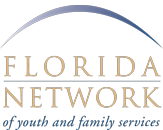President Obama has proclaimed January as National Slavery and Human Trafficking Prevention Month. This month serves to increase public awareness of this unrecognized and misunderstood problem occurring in our own backyards. Many businesses, organizations and communities are doing their part by increasing awareness and implementing training on how to identify and combat human trafficking.

Through our work at the Florida Network of Youth and Family Services, I have experienced an inside look at helping human trafficking victims get back on their feet. I hope to shine some light on what these victims go through – even once they are in a safe environment.
In our daily work with young people who run away from home, get lost along the way and find themselves in our shelters, we compete for relevance with those who would do them harm. If they stay and learn to trust us, we may succeed in helping them face their problems and rebuild their lives.
The decision to stay often hinges upon what our programs do and don’t do. They need warm food, hot showers, clean socks and a bed. They find understanding youth counselors who respect and listen to them. We don’t exploit or degrade them in exchange for any services we offer, or judge them for what they may have done to survive.
In spite of all this, sometimes they leave. The pull of addiction, loyalty to friends still out there and fear of the unknown compel a teenager to leave a safe place. Our challenge is to design services that make staying, often the hardest decision, worth the risk.
This challenge is undeniably more difficult when the youth is under the manipulation of someone who exploits them sexually for profit. When this happens, we recognize them as a victim of minor sex trafficking, a term which reflects how much society has learned since the days of labeling them as teen prostitutes.
The Florida Network works with the Department of Juvenile Justice, the Department of Children and Families and other partners to find ways to get critical services closer to victims and bring more safety to the therapeutic environment. We respect every effort to find answers that help victims transition from exploitation and suffering to a path of survival that affords them every opportunity to develop at their own pace into healthy, successful adults.
Through our efforts and the community’s efforts, I hope to see an overall decrease in human trafficking and an increase in victims receiving therapeutic services. This month, I encourage you to take action by checking out 20 Ways You Can Help Fight Human Trafficking. Together we can prevent human trafficking in our communities and assist those who have unfortunately fallen victim to this monstrosity.

